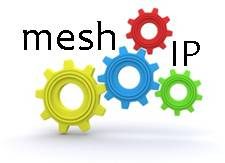 Having attained some basic oversight and policy control over personal devices in the enterprise, corporate IT administrators in 2012 face the appification of enterprise services. Opening up platforms such as iOS and Android to outside developers brings an increased risk of malware. Mobile virtualization enables one physical device to run two parallel virtual phones, supporting enterprise and personal use without compromising enterprise security or personal privacy.
Having attained some basic oversight and policy control over personal devices in the enterprise, corporate IT administrators in 2012 face the appification of enterprise services. Opening up platforms such as iOS and Android to outside developers brings an increased risk of malware. Mobile virtualization enables one physical device to run two parallel virtual phones, supporting enterprise and personal use without compromising enterprise security or personal privacy.
These next-generation mobile devices will have quad-core Cortex-A15 processors from ARM with built-in hardware support for mobile virtualization. Users will be able to manage their work and their lives on one phone.
For example, the consumer domain will provide a full consumer version of Android with Android Market, Facebook, Angry Birds and other popular consumer apps. The service provider and handset manufacturer manage this domain and will keep the consumer software up to date.
The secure enterprise domain, meanwhile, will be deployed over the air and run its own Android instance without any market or consumer apps. Instead, this domain will connect to the enterprise mobile-device-management (MDM) system and, potentially, to a self-support portal/app store for employees. From these, the IT administrator can provision and take control of a full enterprise-targeted Android environment with IT-controlled enterprise apps. Updates of this Android version might be less frequent to ensure that enterprise applications run smoothly and can be validated as they become available.
As mobile virtualization increases the security, manageability and control of the Android environment, developers will have more incentive to create applications targeting the enterprise—setting the stage for the next revolution in enterprise computing.
Author: Morten Grauballe
Source
- The Customer Edge Drives the Need for NaaS - June 25, 2023
- Blockchain Evolves And Secures - January 13, 2019
- Bessemer Ventures’ 2018 Cloud Computing Trends - February 25, 2018




